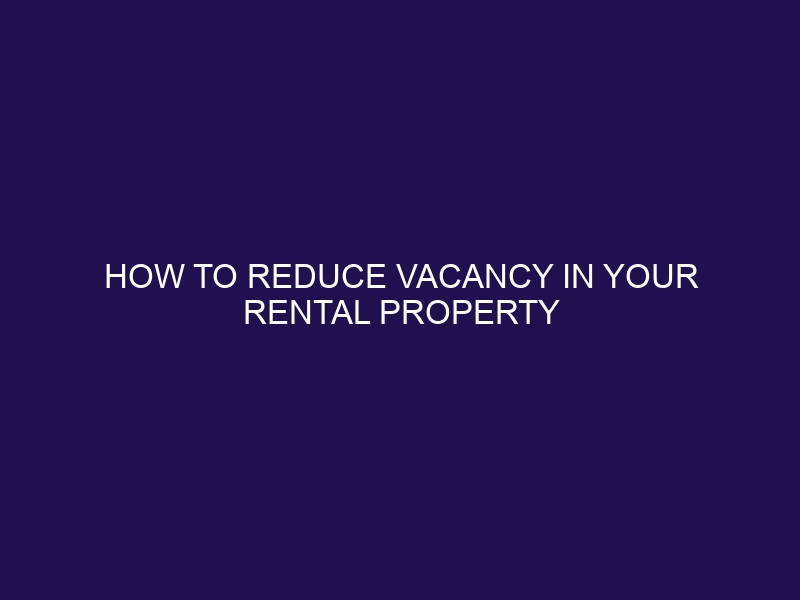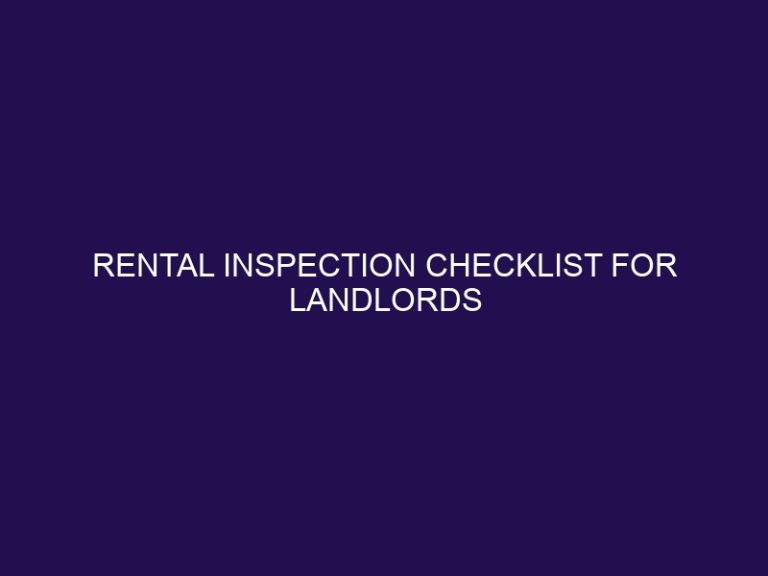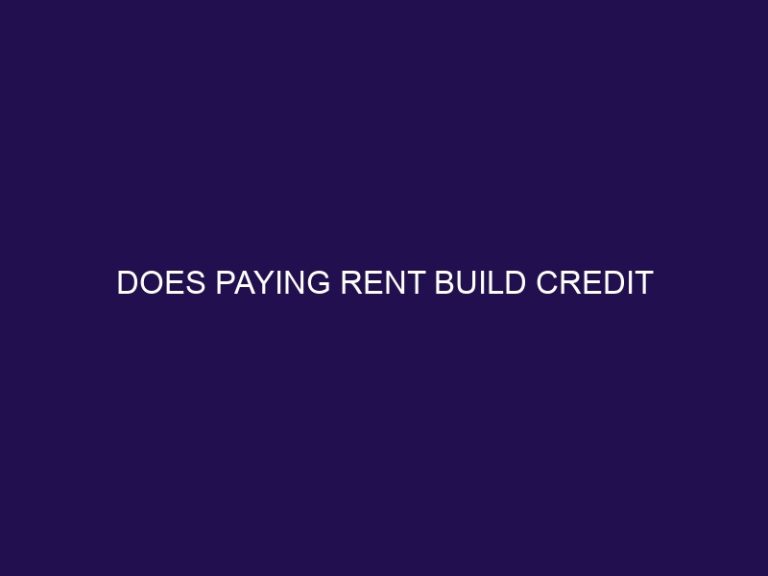How to Reduce Vacancy in Your Rental Property
Rental property vacancy refers to the time when a rental unit is unoccupied and does not have any tenants. It is a common concern for landlords and property owners as it can result in financial loss and disruption in cash flow. In this article, we will discuss the importance of reducing vacancy rates and effective ways to do so.
Reducing vacancy is crucial for landlords and property owners as it directly impacts their profit and return on investment. A high vacancy rate means a decrease in rental income, which can lead to financial strain and difficulty in covering property expenses.
Calculating your rental property vacancy rate is a simple process. Divide the number of vacant units by the total number of units in your property, and then multiply it by 100. This will give you the percentage of vacancy rate.
There are various reasons for high vacancy rates, including poor property management, high rent prices, and an unattractive property. These issues can be addressed by implementing the following strategies:
- Improve Property Management: Efficient property management ensures smooth operations and timely response to tenant needs, ultimately leading to tenant satisfaction and retention.
- Offer Competitive Rent Prices: Conduct market research to determine the current rent prices in your area and price your rental unit accordingly to attract potential tenants.
- Make Your Property More Attractive: Enhance the curb appeal of your property by investing in renovations or upgrades that will make it more appealing to potential tenants.
- Utilize Effective Marketing Strategies: Utilize various marketing channels to advertise your rental property, such as online rental platforms, social media, and local listings.
- Offer Incentives to Potential Tenants: Consider offering incentives such as discounted rent or free utilities to attract potential tenants.
- Keep Current Tenants Happy: Happy tenants are more likely to renew their lease, reducing your vacancy rate. Ensure regular communication and address any issues promptly to maintain a good tenant-landlord relationship.
- Stay on Top of Maintenance and Repairs: A well-maintained property is crucial in attracting and retaining tenants. Regular maintenance and timely repairs can go a long way in reducing vacancy rates.
Reducing vacancy rates not only ensures a steady rental income but also has several other benefits such as lower turnover costs, reduced advertising expenses, and increased property value.
In conclusion, reducing vacancy rates in a rental property is crucial for landlords and property owners. By implementing effective management strategies and addressing potential issues, vacancy rates can be significantly reduced, resulting in a profitable and successful rental property.
What Is a Rental Property Vacancy?
A rental property vacancy is when a unit in a rental property is unoccupied and available for rent. This occurs when a tenant moves out, and the property remains untenanted until a new tenant leases it.
Why Is Reducing Vacancy Important?
Reducing vacancy is important for maintaining steady rental income, properly maintaining the property, and overall profitability. Empty units can result in lost revenue and additional strain on current tenants.
To emphasize, one property owner was able to decrease vacancy rates by enhancing amenities, leading to a higher rate of tenant retention and more referrals.
How to Calculate Your Rental Property Vacancy Rate?
- To calculate the vacancy rate for your rental property, divide the number of vacant units by the total number of units.
- Then, multiply the result by 100 to express the vacancy rate as a percentage.
- It is important to regularly monitor and recalculate the vacancy rate to track the performance of your property.
What Are the Causes of High Vacancy Rates?
As a rental property owner, high vacancy rates can be a major source of frustration and financial strain. But before we dive into solutions, it’s important to understand the root causes of high vacancy rates. In this section, we will discuss the three main factors that contribute to high vacancy rates: poor property management, high rent prices, and an unattractive property. By identifying these causes, we can better address and reduce vacancy in your rental property.
1. Poor Property Management
- Implement thorough tenant screening procedures.
- Respond promptly to maintenance requests.
- Keep accurate financial records and budgets.
- Regularly communicate with tenants to address concerns and ensure satisfaction.
- Stay updated on local rental laws and regulations.
My grandfather, a real estate investor, once faced challenges due to poor property management. Implementing stringent screening and proactive communication turned around the rental property’s performance.
2. High Rent Prices
High rent prices can discourage potential tenants, resulting in higher vacancy rates. It is crucial to analyze local market rates and adjust prices accordingly to stay competitive and attract and retain tenants.
3. Unattractive Property
An unattractive property, with poor aesthetics or outdated features, can be a major deterrent for potential tenants. To improve the property’s appeal, consider:
- Refurbishing interiors
- Enhancing curb appeal
- Modernizing amenities
These upgrades can greatly decrease the vacancy rate and attract a larger pool of tenants.
How to Reduce Vacancy in Your Rental Property?
As a landlord, one of your top priorities is to ensure that your rental property is occupied by reliable and responsible tenants. However, vacancies can be a common and costly issue for many landlords. In this section, we will discuss various strategies for reducing vacancy in your rental property. From improving property management to offering incentives to potential tenants, we’ll cover all the essential steps you can take to keep your property occupied and profitable.
1. Improve Property Management
- Enhance property management by implementing thorough tenant screening processes.
- Ensure timely maintenance and repairs for the property.
- Provide responsive communication and support for any tenant concerns.
- Utilize technology for efficient rent collection and overall property management.
- Regularly assess and adjust rent prices based on market trends and the value of the property.
2. Offer Competitive Rent Prices
- Research the local rental market to understand the average rates.
- Set a competitive price based on property amenities and location.
- Consider offering incentives or flexible lease terms to attract tenants.
Did you know? Offering competitive rent prices can be an effective strategy to attract more potential tenants and decrease vacancy periods.
3. Make Your Property More Attractive
- Enhance curb appeal with landscaping and exterior maintenance to make your property more attractive.
- Update interior with modern fixtures and fresh paint to attract more tenants.
- Offer amenities like Wi-Fi, laundry facilities, and parking to make your property more appealing.
- Ensure the property is clean, well-lit, and secure to make it more attractive to potential tenants.
- Promote community engagement through events and gatherings to make your property a desirable place to live.
4. Utilize Effective Marketing Strategies
- Identify and target specific audiences and tailor marketing messages accordingly.
- Utilize various digital platforms for targeted advertising purposes.
- Showcase unique property features through high-quality photography and virtual tours.
- Implement engaging social media campaigns to reach potential tenants.
- Increase property visibility online by utilizing effective search engine optimization (SEO) techniques.
5. Offer Incentives to Potential Tenants
- Offer discounts on the first month’s rent.
- Provide referral bonuses to current tenants for recommending new tenants.
- Include free amenities such as parking, internet, or gym access.
- Offer flexible lease terms or early move-in incentives to attract potential tenants.
6. Keep Current Tenants Happy
- Regular Communication: Keep open lines for feedback and address concerns promptly.
- Reward Loyalty: Offer renewal incentives or small gestures of appreciation to keep current tenants happy.
- Prompt Maintenance: Ensure timely repairs and upkeep for a comfortable living environment to maintain tenant satisfaction.
- Respect Privacy: Give advance notice for property inspections or visits to respect the privacy of tenants.
Did you know? Happy tenants are more likely to renew their leases, reducing vacancy rates.
7. Stay on Top of Maintenance and Repairs
- Perform regular inspections and repairs.
- Maintain landscaping and exteriors.
- Respond promptly to maintenance requests.
- Keep records of maintenance and repairs.
Pro-tip: Make sure to stay on top of all maintenance and repairs to not only reduce vacancy, but also enhance tenant satisfaction and increase property value.
What Are the Benefits of Reducing Vacancy in Your Rental Property?
Reducing vacancy in your rental property leads to numerous benefits such as:
- Increased rental income
- Lower turnover costs
- Improved property maintenance
- It also helps foster a sense of community
- Attract reliable tenants
- Enhance property value
To reap these benefits, consider:
- Offering lease incentives
- Investing in property upgrades
- Providing excellent tenant services
Frequently Asked Questions
What are some basic rules for reducing vacancy in a rental property?
The following are some basic rules to reduce vacancy in a rental property:
- Conduct thorough research on the local real estate market and vacancy rates.
- Act immediately to address any necessary repairs and refresh the property.
- Price the rental unit competitively by researching similar local rents and consulting with property experts.
- Tailor advertising to the specific rental area and target audience.
- Utilize various advertising methods, such as social media, word-of-mouth, and traditional media outlets.
- Offer incentives, such as a discount on rent or free gifts, to attract potential tenants.
How can I determine the best rental price for my property to reduce vacancy?
To determine the best rental price for your property, follow these steps:
- Research local rent prices and market trends.
- Consult with property experts and local realtors.
- Consider the location and amenities of your property.
- Assess any necessary repairs or updates that may justify a higher rent.
- Be open to negotiation with potential tenants.
What are some effective strategies for attracting and retaining high-quality tenants?
To attract and retain high-quality tenants, consider implementing the following strategies:
- Provide amenities that are in high demand, such as laundry facilities or parking.
- Be flexible with lease terms, such as allowing pets or offering shorter leases.
- Maintain the property in top condition and address any tenant concerns promptly.
- Build positive relationships with tenants and offer incentives for renewing their lease.
- Conduct thorough background checks and screenings to avoid problematic tenants.
- Stay up to date with market trends and adjust rents accordingly.
What should I do if I am facing a high vacancy rate in my rental property?
If you are facing a high vacancy rate in your rental property, consider taking the following steps:
- Assess your current circumstances and make any necessary adjustments, such as offering incentives or lowering the rent.
- Think outside the box and consider unique advertising methods.
- Consider offering a long-term lease or providing additional services, such as paid utilities or a security system.
- Make sure your property is in top condition and address any rental issues promptly.
- Network with other property owners and learn from their experiences.
What are the potential consequences of having a high vacancy rate in my rental property?
Having a high vacancy rate in your rental property can have various consequences, including:
- Lost rent, leading to financial difficulties and struggle to cover mortgage payments and other expenses.
- Increased expenses, such as insurance, taxes, and maintenance costs.
- A bad impression on potential tenants, making it harder to attract future renters.
- Difficulty maintaining the property and common areas, leading to further decrease in property value.
- Possible legal issues and financial strain if the property remains vacant for an extended period of time.
What are some practical tips for reducing vacancy in my rental property?
To reduce vacancy in your rental property, consider implementing the following practical tips:
- Act quickly to make necessary repairs and updates to the property.
- Price the rental unit competitively based on market rents and property value.
- Tailor advertising to the specific rental area and target audience.
- Offer incentives, such as a discount on rent or free gifts, to attract potential tenants.
- Stay up to date with market trends and adjust rents accordingly.
- Conduct thorough background checks and screenings to avoid problematic tenants.







